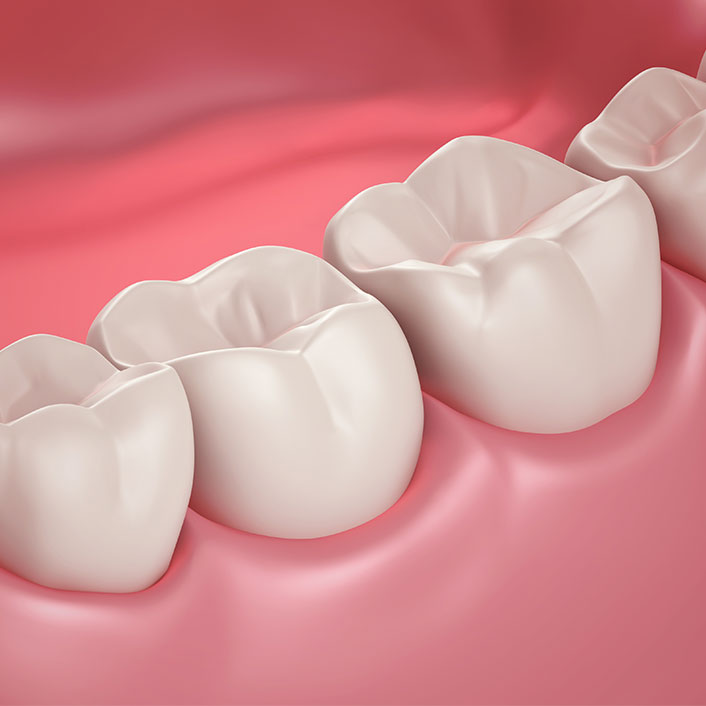General Services
Periodontal Therapy

The foundation for one's teeth is formed by the gums, ligaments and bone around the teeth. All structures are also referred to as the periodontium. When the periodontium becomes unhealthy, it jeopardizes the teeth just as a bad foundation would threaten the stability of a house. Signs of unhealthy periodontium include: gums that are red and bleed easily, persistent bad breath, gums that are pulled away from the tooth, loose teeth, and changes in the position or bite of the teeth. Any of these may be a sign of a problem. However, with proper gum treatment it may be possible to return gum tissue to a healthy state. Treatment usually involves a deep cleaning or root planing done after a local anesthetic has been used to ensure your comfort. If the gum disease gets too severe it may need to be treated through surgery or extraction. This is why it is important to have it treated at the first sign of a problem.
How do I know if I have periodontal disease?
Common signs of periodontal disease include:
- Gums that bleed whenever you brush or floss
- Persistent bad breath that isn't helped by oral hygiene or mouthwash
- Red, swollen, or tender gums
- Feelings of pain and discomfort around the gums
- Teeth that suddenly appear longer (this can mean that your gumline is receding)
Of course, it's important to remember that in some cases, periodontal disease can show only very subtle symptoms or even none at all. That's why attending regular check-ups are crucial to maintaining your oral health!
"How can you help me?"
In the earliest stages of periodontal disease, regular cleanings should be enough to prevent any damage from being done. Dr. Alcorn is always happy to share techniques and tips with patients on how to improve oral hygiene and keep your smile looking great!
If your specific case has progressed to a more advanced stage, we may need to provide a special cleaning called scaling and root planing. During this therapy, we'll clean tartar, plaque, and toxins from above and below the gum line, as well as clear away hard build-up on root surfaces. This will help your gum tissue heal.
